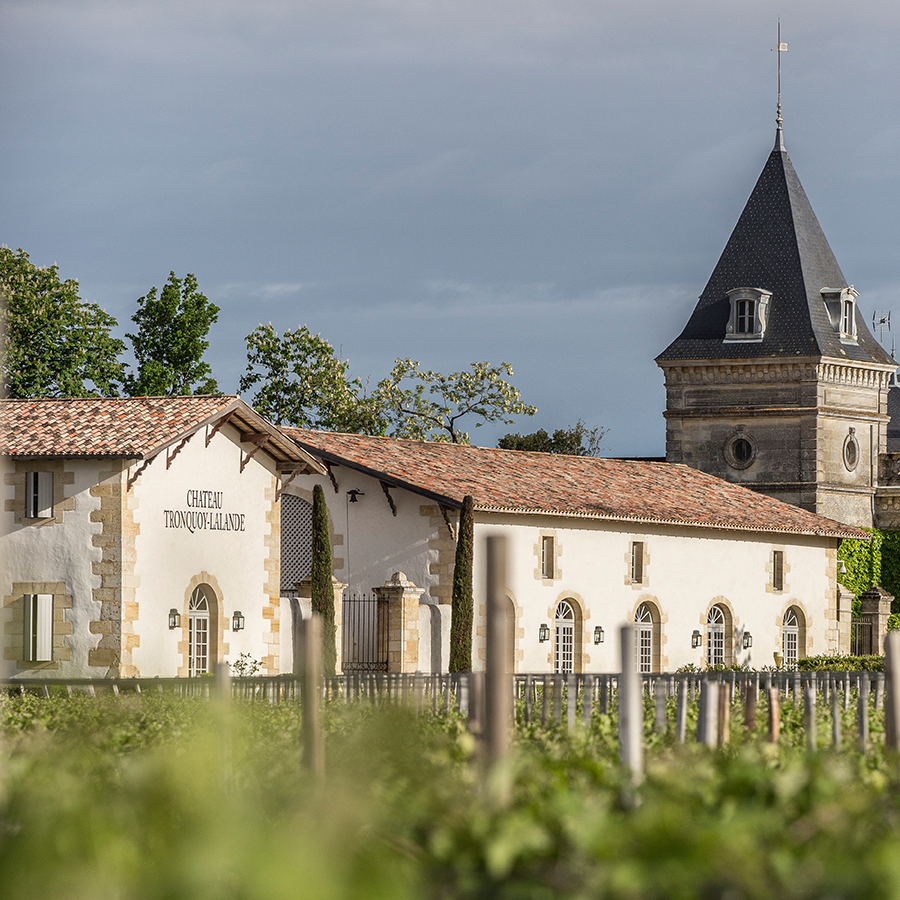In conversation with Château Tronquoy-Lalande
Author: Issariya Morgan

Ch. Tronquoy-Lalande have made our new Own Selection St Estèphe for us. We speak to Lorraine Watrin, the château’s Sales Director, about the estate’s terroir and philosophy.
Located in the heart of the St Estèphe appellation, Château Tronquoy-Lalande traces its history back to 1745, making it one of the oldest properties in the region. Since 2006, the château has been in the hands of Martin and Olivier Bouygues of nearby Château Montrose, regarded as the first growth of St Estèphe.
Marking the release of our new Own Selection St Estèphe, we caught up with Lorraine Watrin to talk terroir, sustainability and the growing reputation of the St Estèphe appellation.
Can you tell us about the terroir at Château Tronquoy-Lalande?
The property is 30 hectares, and it’s situated on a little hill near the village of St Estèphe. The terroir here is very specific because it’s a mix of gravel and clay. Although the Médoc is quite flat, Tronquoy-Lalande sits atop a little hill at 23 metres’ altitude, which is great for drainage and gives us good ventilation.
Because of the soil, we’re able to plant different grape varieties. Here, we plant 50% Merlot, 45% Cabernet Sauvignon and 5% Petit Verdot. This combination produces a very pleasant wine – very gourmand – due to the high proportion of Merlot, something quite unique to us in the Médoc.
How important is sustainability to you?
This year, we’ve signed up for organic certification. We started taking steps in this direction in 2006. In 2015, we began to implement an organic approach in some plots – we didn’t do the whole vineyard at the same time. For us, it was important to take things step by step. Since 2015, we’ve increased the scope every year. But organic viticulture is only one side of our sustainability programme.
Another aspect that’s very important to us is biodiversity in the vineyard. We’re actively planting trees around the vineyard to attract bees and insects. There’s a little forest in the middle of the vineyard, where we’ve put up birdhouses. It all helps create more biodiversity.
The difference now, compared to a few years ago, is that we’re communicating more about sustainability. We’ve been totally organic since 2019, but we’ve only just signed up for the certification this year.
How has St Estèphe changed since you’ve been working there?
I think the reputation of the region is getting better – more modern, perhaps. St Estèphe isn’t the most well-known appellation of the Médoc; there are fewer classified growths here than in Pauillac, for example, but there’s a lot of goodwill and plenty of discussions happening between the châteaux.
Previously, St Estèphe had a reputation for full-bodied wines with too much tannin, and you had to wait too long before it was ready for drinking. But I think that’s changed: now, we go for finer vinification and finer selection. It’s not only us, but all the vignerons in the appellation.
How would you enjoy this wine? Are there any food pairings you recommend?
It’s excellent as an apéritif, and pairs very well with good red meats. It would also go well with some chicken. The key here is not to pair it with dishes that are too powerful, as this is quite a light and fruit-forward wine. It’s a great sharing wine, one you can just open and enjoy with friends.
You can buy our Own Selection St Estèphe here.


